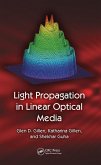Most of the mentioned optical design programs are based on the idea of a spreadsheet that contains the information on each surface, radius, thickness, materials, and position among other parameters. This paradigm has its positive aspects and negative aspects. But optical design is a field under constant evolution and new ways to design optical systems are emerging. In this book, we are going to construct, optimize, and analyze optical systems under the fresh paradigm of Computer-aided design (CAD) with the help of Quadoa Optical CAD, a novel optical design software. Within the chapters of the book, we are going to see why this paradigm can be very useful in designing optical systems in comparison with the one proposed by spreadsheets.
The purpose of this book is to teach optical design with a fresh and reliable tool, Quadoa Optical CA. This book mixes the classical books in optical design and a manual of Quadoa Optical CAD. The purpose of this blend is to give readers enough knowledge to start a practical optical design, with solid theory and robust tools in Quadoa Optical CAD.
Dieser Download kann aus rechtlichen Gründen nur mit Rechnungsadresse in A, B, BG, CY, CZ, D, DK, EW, E, FIN, F, GR, HR, H, IRL, I, LT, L, LR, M, NL, PL, P, R, S, SLO, SK ausgeliefert werden.









